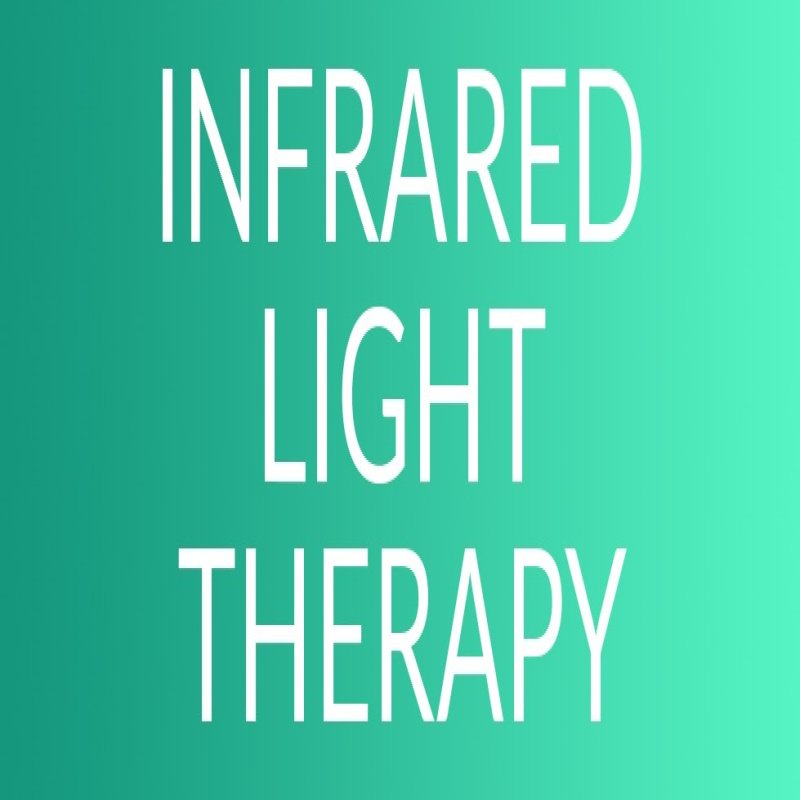
Infrared light therapy has various health benefits and is widely used in medicine. The reason is that the therapy is a natural and safe way to treat health conditions like muscle pain, joint stiffness, and arthritis, to name a few.
Read to learn more.
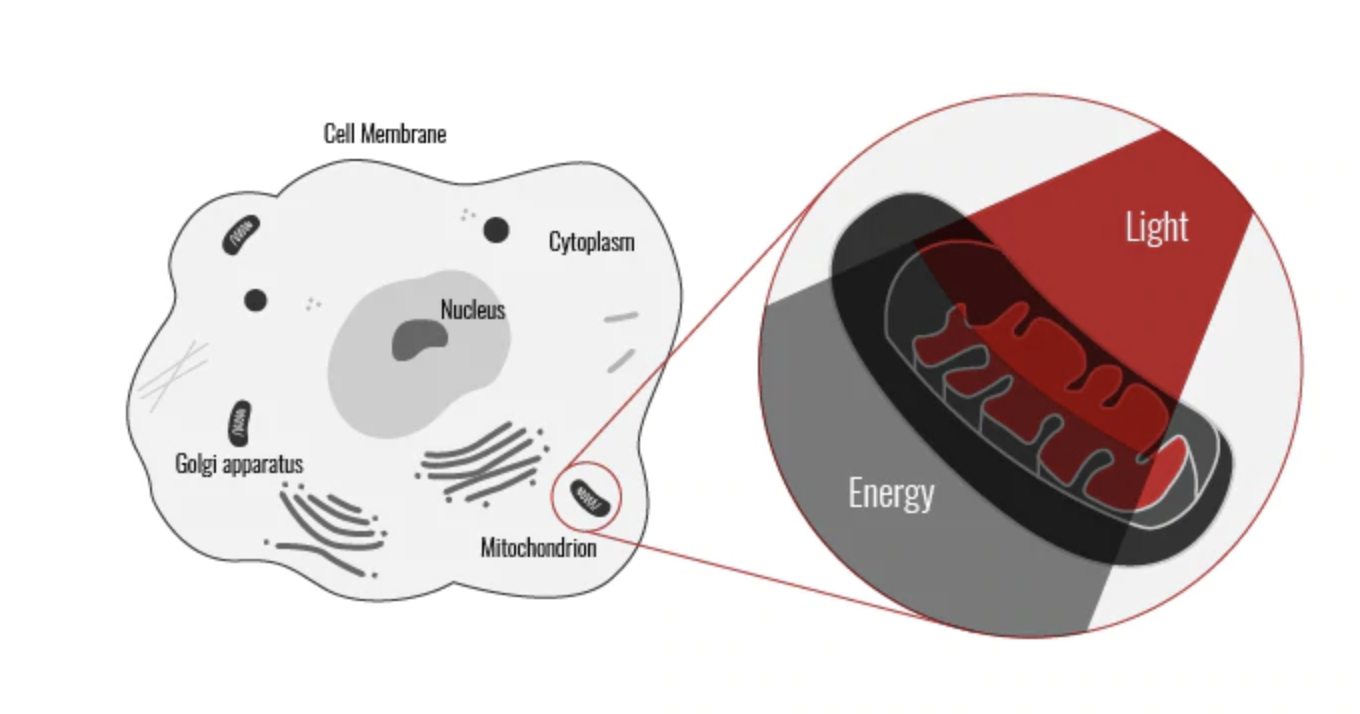
Infrared light therapy, or light therapy, is also known as heliotherapy and phototherapy. In this, the person is exposed to specific light wavelengths using devices like dichroic lamps, fluorescent lamps, full-spectrum light sources, light-emitting diodes, etc. The person is exposed to this light for a specific time. Infrared therapy is a new and innovative light-based method to treat pain and inflammation in various body parts.
Infrared light is a component of sunlight that cannot be seen. This kind of light is warm and proves to be healthy if exposed to it. Unlike ultraviolet light, which can damage the skin, infrared light enhances cell regeneration and is delivered to the site of injury or inflammation at certain wavelengths, promoting cell repair. The important feature of this therapy is its ability to penetrate even the deepest layers of the skin, providing better pain relief. Also, it is safe, natural, non-invasive, and painless.
Infrared (IR) means “beyond (farther or near)" red"; it begins just after the visible red light on the electromagnetic spectrum. It was discovered by a British astronomer while experimenting to measure the temperature between the colors.
Types of Infrared Light Therapy
There are three types of infrared light used in this therapy based on wavelength:
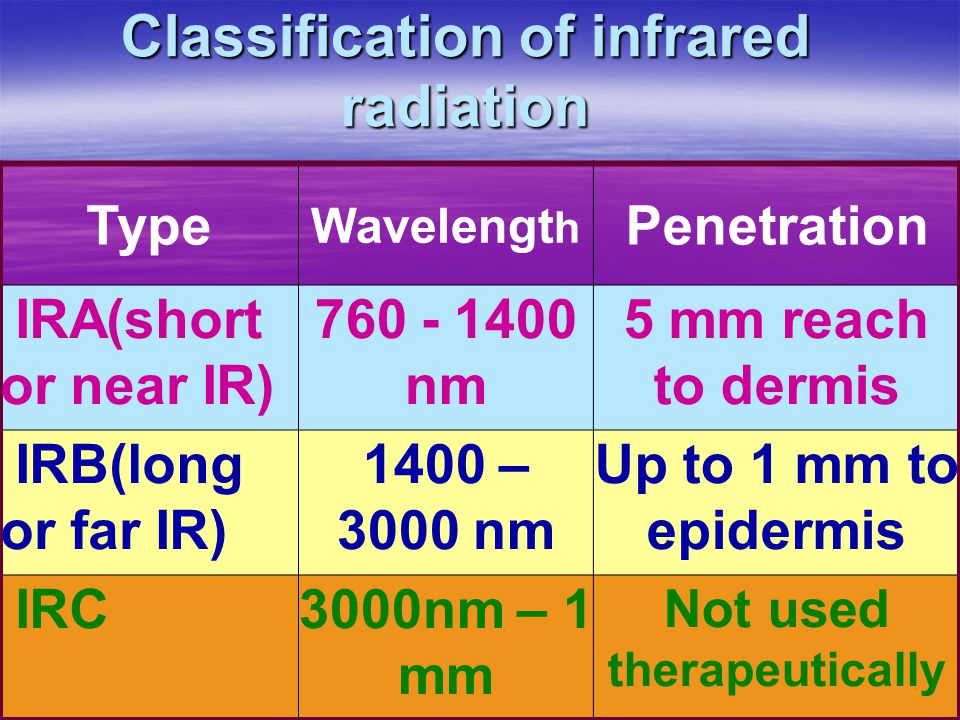
- Near-infrared ray light: This uses wavelengths of light from 760 to 1400 nm. It is closest to the red end of the visible light spectrum and also has the shortest frequencies.
- Mid-infrared ray light: This is also known as infrared B or IR-B. It is a region that lies between near- and far-infrared, and the wavelength is between 1400 and 4000 nm. Electronic devices and remote control devices you use at home make use of this wavelength of light.
- Far infrared ray light: This is also called long-wave infrared ray heat, thermal infrared ray heat, or IR-C. It is the largest part of the spectrum and lies farthest from the red and near the microwave region. The wavelength of far infrared ray light is in the 4000-10,000nm range and is used in many infrared saunas.
How does the Therapy Work?
Infrared light therapy is completely painless; it is stored in flexible pads that have many different infrared ray lights that are put on the skin in an area where there have been injuries or pains. The energy from the infrared ray lights goes deep beneath the skin so that it can be absorbed by the deeper tissue layers.
Scientific research has shown that human bodies can absorb particles of light and transform that light energy into Adenosine Triphosphate (ATP), the form of energy needed to power metabolic processes, improve cellular performance, and encourage tissue repair and regeneration. Mitochondria produce a molecule known as adenosine triphosphate, or ATP, which contains energy within its chemical bonds. Often referred to as the energy currency of mitochondria, when those chemical bonds are broken, it results in energy. Special enzymes in ATP transfer that energy, giving the cell what amounts to a straight shot of fuel. ATP itself can’t be stored; it's only produced by mitochondria for immediate use and then recycled. These processes need ATP practically every second, as they burn through energy at a rapid pace to keep your body moving, breathing, eating, and thinking throughout the day.
If your body doesn't produce enough ATP, the consequences are dire. Too little ATP causes undesirable effects that lead to physical impairment, organ malfunction, and even death.
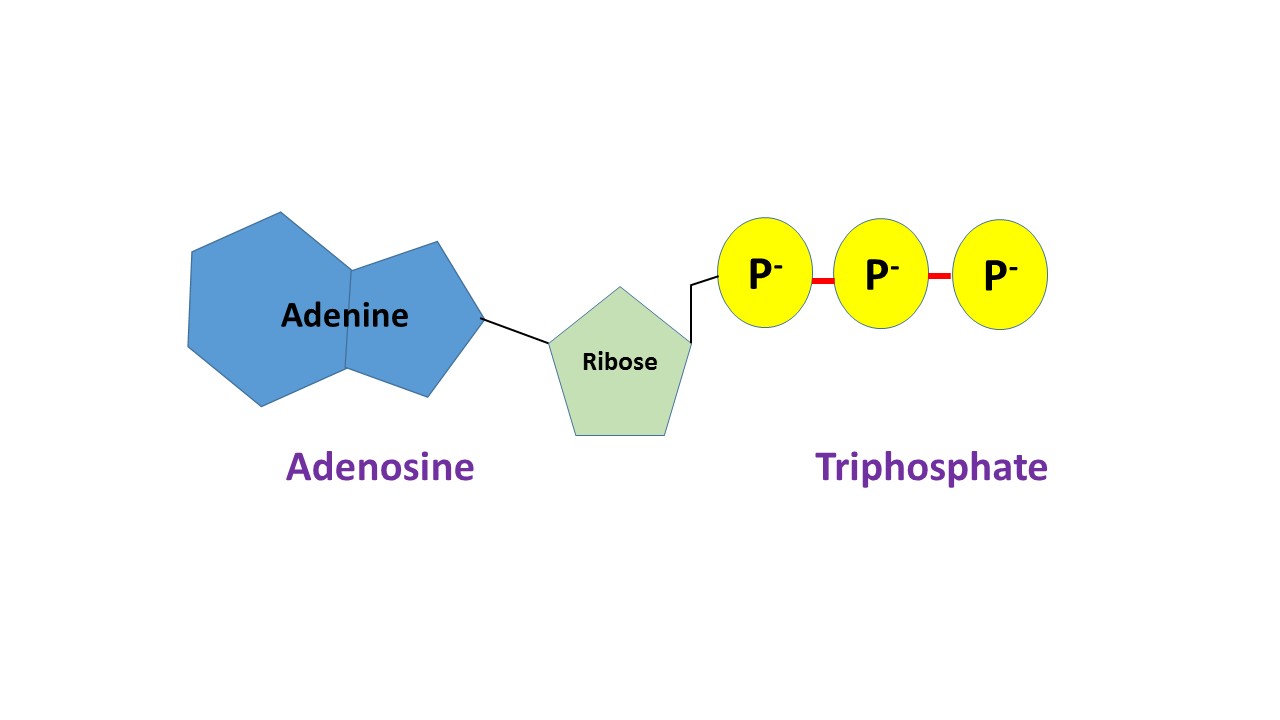
Poor circulation and the lack of oxygen and other essential molecules (i.e., glucose and Adenosine Triphosphate (ATP)) in blood vessels can cause pain or a lack of sensation. Light energy stimulates the release of nitric oxide, causing blood vessels to increase in diameter (vasodilation) and allowing more blood flow, oxygen, and other important factors to be delivered. This increase in oxygen and nutrients, along with stimulation of the light energy emitted, increases ATP production, which activates pain-relieving pathways. This decreases pain and inflammation and increases tissue regeneration in the localized area.
The rise in circulation to the affected area lasts for many hours after the pads are taken off. While the relief is felt after just one treatment, the best benefits are seen from using the pads over many different therapy sessions.
Health Benefits of Infrared Light Therapy
- Cardiovascular health: One of the key health benefits of infrared therapy is improvement in cardiovascular health. Infrared light increases the production of nitric oxide, a vital signaling molecule that is important for the health of blood vessels. Nitric oxide is essential in improving blood circulation, which provides more oxygen and nutrients to injured tissues. This is a short-acting gas that helps maintain the healthiness of your arteries; it causes the arteries to relax so that blood pressure can be regulated, oxygen-free radicals can be attacked, and platelets can be stopped from causing clumps and blood clots in the arteries. Infrared ray heat causes the release of gaseous nitric oxide that improves the natural flow of blood into the area, causing nutrients and oxygen to flood the area, relieving pain, and healing injured soft tissues.
- Pain and Inflammation: Infrared therapy is an effective and safe remedy for pain and inflammation. It can penetrate deep through the layers of the skin to the muscles and bones. Since infrared therapy enhances and improves circulation in the skin and other parts of the body, it can bring oxygen and nutrients to injured tissues, promoting healing. It helps ease pain, relieve inflammation, and protect against oxidative stress.
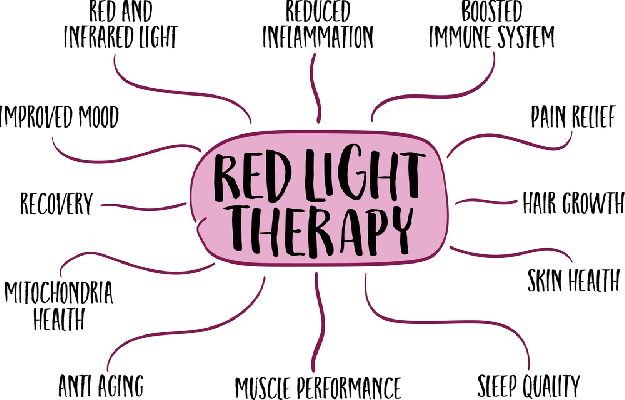
- Muscular injuries: Infrared therapy improves the action of the mitochondria within cells, thus triggering the growth and repair of new muscle cells and tissues. In other words, infrared light can hasten the repair process after a muscle injury.
- Detoxification: Detoxifications are important since they may strengthen the immune system. At the same time, detoxification helps biochemical processes function properly, improving food digestion. In infrared saunas, the body’s core temperature increases, leading to detoxification at the cellular level. The theory behind this is that when the red light flashes, the toxins in the bloodstream are broken down into their molecules. Once the molecules have been broken down, they can be released from the body through the bloodstream. Red light therapy assists with detoxification because it allows the body to expel waste from organs and glands such as the liver, kidney, and gall bladder. These organs are used by the body to store toxins; when these organs get clogged up, the body can get rid of the waste more efficiently. Thus, the person has a healthier and more effective functioning of organs.
- Cancer cure: Infrared therapy is a potentially viable cancer treatment. Studies show significant activation of nanoparticles when they are exposed to infrared radiation, rendering them highly toxic to surrounding cancer cells.
Light Therapy for Autism
Just as light therapy is safe and effective for adults, it produces the same positive effects in children with autism. The child may experience improved sleep quality and a reduction in behavioral issues. Children with autism are especially susceptible to mood changes due to lighting. Lights with mellow colors, like blue, can help a child relax and become creative. The body’s circadian rhythms are guided by biological clocks in the body that a master clock in the brain regulates. This master clock, located in the hypothalamus’ suprachiasmatic nucleus, or SCN, responds to light. When the eyes sense light, they send signals to the SCN that tell it to secrete hormones or relay signals to other parts of the body. For example, when the eyes sense light, particularly blue and white wavelengths, they trigger the SCN to produce serotonin, which helps the body feel awake. In the presence of darkness, the SCN converts serotonin to melatonin, which makes the body feel sleepy. An imbalance in light exposure disrupts hormone production and protein synthesis, leading to a myriad of consequences, including sleep disorders, behavioral problems, hormonal imbalances, altered insulin production, and stress on the body.
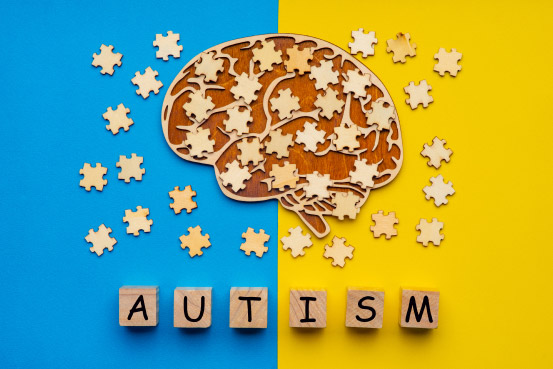
Damaged crystalline structures in neural pathways lead to the development of autism in children because they halt speech and physical, emotional, and mental development. Exposure to light wavelengths in rainbow colors (i.e., red, orange, green, blue, indigo, yellow, and violet) using light therapy will repair the damaged structures and allow a child to develop more normally. Light therapy has been used for more than just relieving autism-related symptoms. Light can help regulate a child’s circadian rhythms; these rhythms govern our body’s “internal master clock.” For example, they tell us when it’s time to go to sleep. A lack of natural light can cause our rhythms to fall out of sync. Therefore, treatment can make a child with insomnia fall asleep without aids and become more alert during the day, among other benefits. Light therapy also helps in:
- Potentially lower the child’s dose of antidepressants or sleep medications
- Reduce sleep-related problems, such as insomnia
- Reduce disruptive behaviors
- Improve sleep-wake cycles
- Limit the use of sleep aids to help a child fall asleep
- Reduce circadian rhythm disruptions
- Improve daytime alertness
The best type of light to use for light therapy is one that illuminates at 10,000 lux and filters all ultraviolet light. Use the light in the morning after your child wakes up. Simply being near the light for as little as 30 minutes may be enough to relieve a child’s symptoms and improve sleep. The best times of day to use light therapy products are in the morning and afternoon. Avoid using lightboxes in the evening or at night because the wavelengths emitted promote wakefulness.
Other Health Benefits
Infrared light treatments can set back the signs of aging so that people can look many years younger without having to undergo plastic surgery procedures or go through treatment with harsh chemicals. Infrared ray light treatments can smooth wrinkles, soften rough spots, diminish the appearance of reddened areas, shrink the size of the pores, and tighten the skin.
Infrared light therapy can also be used for these conditions:
- Blunt trauma to the tissues
- Arthritic conditions
- Back pain
- Diabetic neuropathy
- Bursitis
- Fibromyalgia
- Carpal tunnel syndrome
- Neuropathy
- Neck pain
- Muscle strains and sprains
- Tendonitis
- TMJ syndrome (Temporomandibular Joint & Muscle Disorders)
- Sciatica
- Rheumatoid arthritis
- Wound care
- Surgical scars
Added to the above conditions, it also helps people who want to lose weight. It causes the heart rate to increase by 50%–75%; so the body can burn more calories.
Conclusion
Infrared ray light treatments are all-natural ways to achieve many different health benefits. It is just like normal red light therapy, with the exception that this type of light is completely invisible, can go deep into the body's soft tissues, and can affect the joints, bones, muscles, and soft tissues. This type of therapy is approved to be used at home for people who are suffering from chronic pain conditions.


.png)


